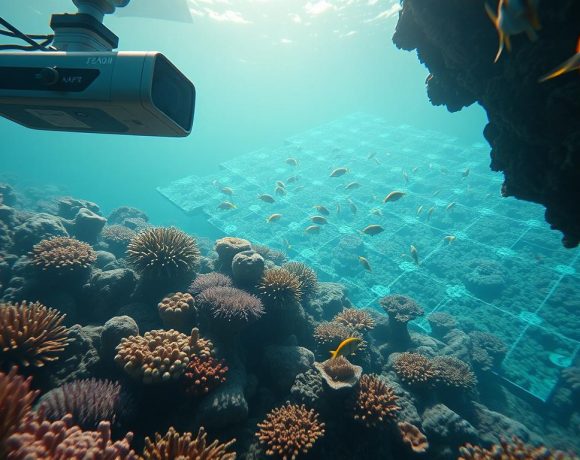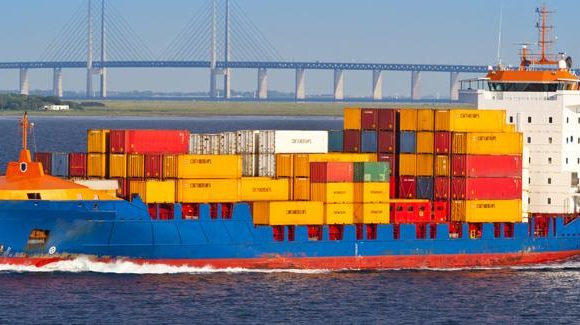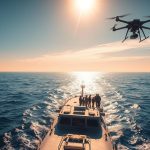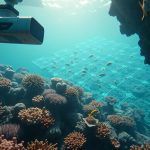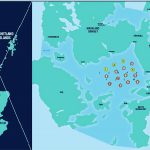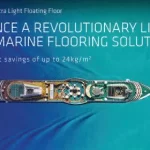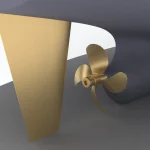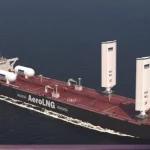The Fight to Save Endangered Marine Species: What’s Working?
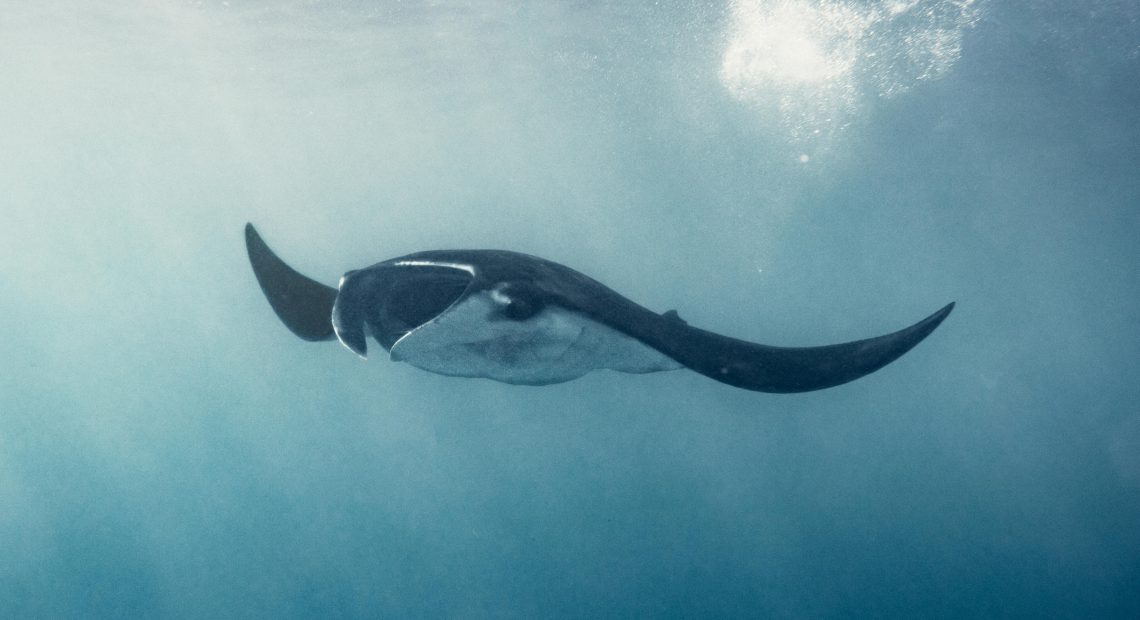
Our oceans are full of life, from tiny plankton to huge whales. This variety of marine life is key to healthy oceans. It affects food chains and helps control the climate. But, many sea creatures are now at risk of disappearing.
There are big challenges. Fishing too much is depleting populations. Plastic pollution is harming wildlife. Climate change is also changing habitats. These issues are putting a lot of pressure on ocean animals.
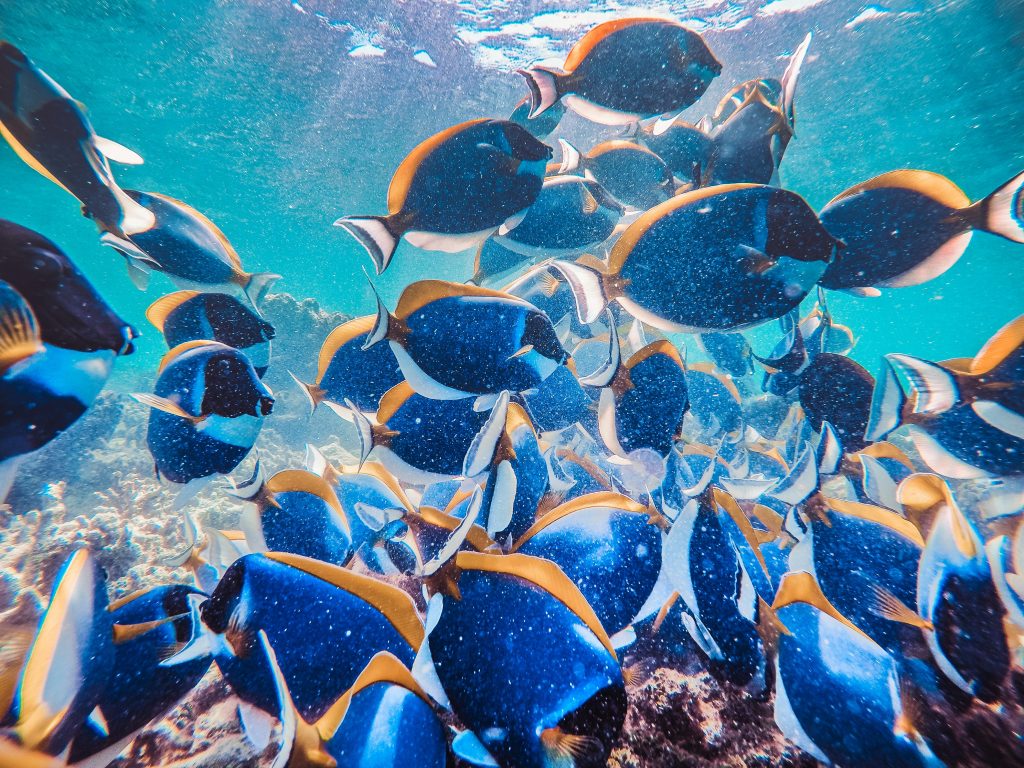
But, there’s hope. New conservation techniques are helping protect sea life. Things like advanced tracking tech and local projects in the UK are making a difference.
This article will look at the most endangered sea creatures in British waters. We’ll see the threats they face and the solutions that offer hope. By learning what works, we can help protect our oceans for the future.
Key Takeaways
- Ocean biodiversity faces multiple threats but innovative conservation strategies are showing promising results
- Technology plays a critical role in monitoring and protecting vulnerable sea creatures
- Community-led initiatives along UK coastlines contribute significantly to conservation success
- Policy changes and protected marine zones have demonstrated measurable benefits
- Conservation efforts require both global cooperation and localised approaches
- Sustainable fishing practices are essential for marine ecosystem recovery
- Public awareness and education drive meaningful action for ocean protection
Understanding Endangered Marine Species
To protect our oceans, we must first know what endangered marine species are. Their preservation is key to keeping our oceans healthy. Healthy oceans support us by providing food, regulating the climate, and more.
Understanding the decline of marine species is the first step to conservation. This knowledge helps us take action to protect our oceans.
Definition and Importance
Endangered marine species are at high risk of extinction. The International Union for Conservation of Nature (IUCN) Red List classifies them from “Least Concern” to “Critically Endangered”. This is based on their population trends, distribution, and threats.
These species are vital for ocean health. Marine biodiversity is essential for the ocean’s well-being. Each species plays a unique role in keeping the ecosystem balanced.
When a species goes extinct, it can affect the whole ecosystem. For example, shark decline has led to more rays, which eat bay scallops. This shows how losing a predator can change marine communities.
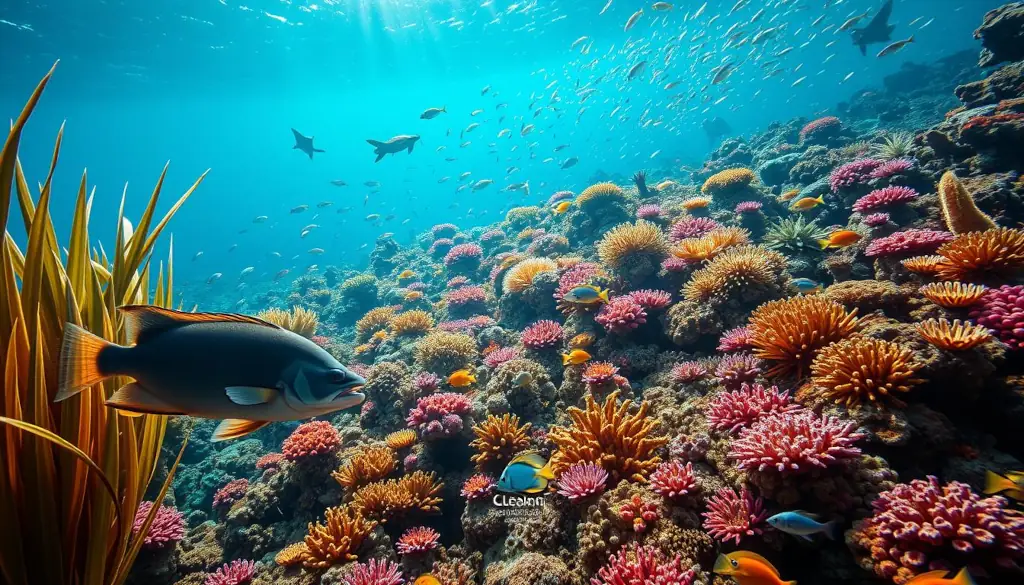
marine biodiversity trophic cascade
Key Statistics
The numbers show a worrying trend of marine species decline. Here are some recent findings:
- Over one-third of marine mammals worldwide are now threatened with extinction
- More than 37% of shark and ray species face extinction risk globally
- In UK waters, 11 species of sharks and rays are critically endangered
- Nearly 90% of global fish stocks are fully exploited, overexploited, or depleted
- The UK has lost up to 92% of its seagrass meadows, critical habitats for numerous marine species
These statistics highlight the damage to marine ecosystems. Human activities are the main cause of these changes. The decline has sped up in recent decades.
Threats to Marine Biodiversity
Marine species face many threats, often at the same time. Marine ecosystem preservation is complex because of this. Most endangered species deal with multiple pressures.
Climate change is a major threat, changing ocean chemistry and affecting habitats. It impacts everything from coral reefs to the migration of large marine mammals. For sea turtles, it can even affect their sex ratio.
Overfishing depletes valuable species and harms others through bycatch. In UK waters, species like Atlantic cod and European eel have declined dramatically.
“The ocean is the heart of our planet. Like your heart pumping blood to every part of your body, the ocean connects people across the Earth, no matter where we live.”
Pollution harms marine environments through various means, including plastic waste. Microplastics are a big concern, found in deep ocean trenches and in marine species’ tissues.
Habitat destruction, like coastal development and bottom trawling, removes vital breeding and feeding grounds. For species like seahorses, which depend on seagrass meadows, this can be disastrous.
Knowing these threats helps us develop effective conservation strategies. In the next sections, we’ll look at specific endangered species in UK waters and conservation efforts that help protect them.
Common Endangered Marine Species in the UK
Britain’s coastal waters are home to many endangered marine species. Their numbers have dropped a lot in recent years. The UK’s seas support a wide range of life, from big ocean wanderers to tiny creatures living on reefs. But, many of these species are now facing big threats to their survival. It’s important to know which species are at risk and why to help save them.
Sharks and Rays
UK waters have over 40 shark and ray species, with many at risk. The basking shark, the second-largest fish, was once hunted for its liver oil and fins. It’s now protected, but its slow breeding makes it hard for its numbers to grow back.
The angel shark has seen a huge drop in numbers. Once common in British waters, it’s now critically endangered. The northeast Atlantic population has fallen by over 80% in a century.
The common skate was the first marine fish species to be classified as critically endangered on the IUCN Red List. Despite its name, this magnificent ray is now anything but common in UK waters.
These fish are key predators in the sea. Losing them can upset the balance of marine life. This can harm fish we eat and the health of the ocean.
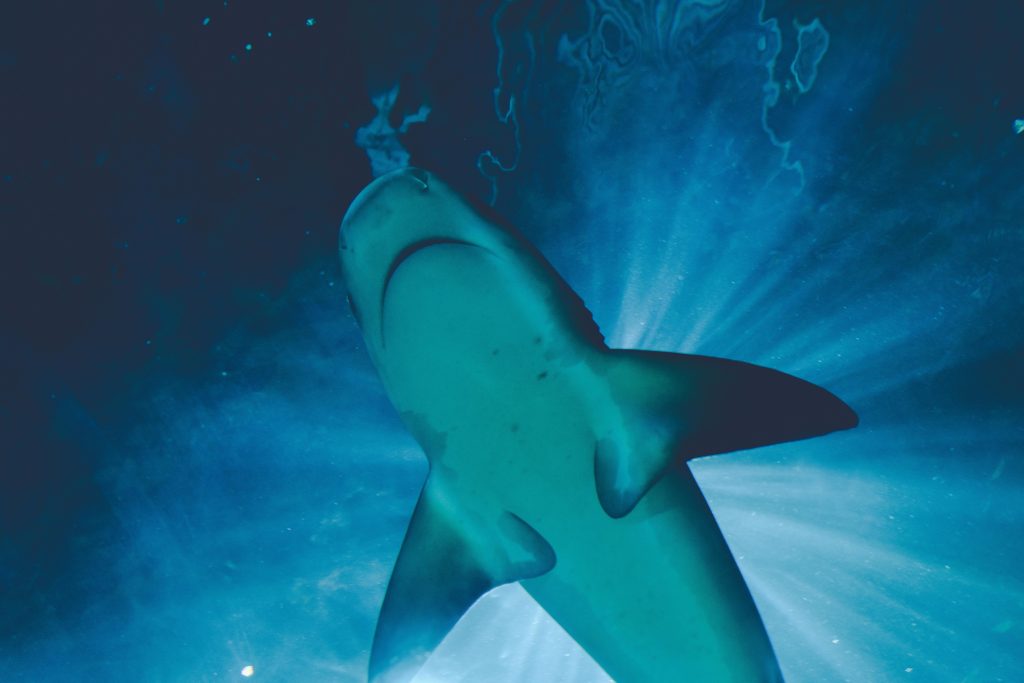
Sea Turtles
Though not always here, several endangered sea turtle species visit UK waters. The leatherback turtle, the largest, comes to British seas in summer to eat jellyfish. They face dangers like mistaking plastic for jellyfish.
Loggerhead and Kemp’s ridley turtles also visit UK waters, but less often than leatherbacks. All sea turtles in the UK are endangered or critically endangered. Losing them is a big loss for marine life, as they’ve played key roles for over 100 million years.
Sea turtles face dangers from egg collection to getting caught in fishing gear. Climate change also harms them, affecting the sex of hatchlings and threatening nesting sites.
Marine Mammals
The UK’s waters are home to many marine mammals, including threatened species. The harbour porpoise, the smallest cetacean in UK waters, is threatened by fishing bycatch, noise pollution, and habitat loss.
Bottlenose dolphins live in several UK places, like Cardigan Bay in Wales and the Moray Firth in Scotland. Pollution, like PCBs, harms them, affecting their reproduction and health.
The UK has important grey and harbour seal populations. Grey seal numbers have gone up, but harbour seals are declining in some areas, like Scotland. Scientists are looking into why, including food competition, disease, and predation.
Minke whales, the most common baleen whale in UK waters, are threatened by fishing gear and ship strikes. They’re important for the sea, helping with nutrient cycling and creating deep-sea habitats.
Protecting these species needs a team effort to tackle many threats at once. By understanding each species’ challenges, we can make plans to help them recover and thrive in UK waters.
Major Threats to Marine Life
Marine life in British waters faces many dangers. These dangers have pushed many species to the edge of extinction. Our ocean’s delicate balance is under attack from three main sources. It’s vital to understand these threats to save our marine life.
Climate Change
The climate crisis is a big threat to our oceans. UK waters are changing fast. Rising sea temperatures are changing where marine life lives and how they eat.
Ocean acidification is also a big problem. It happens when seawater absorbs too much carbon dioxide. This makes it hard for shellfish, corals, and plankton to build their homes, harming the food chain.
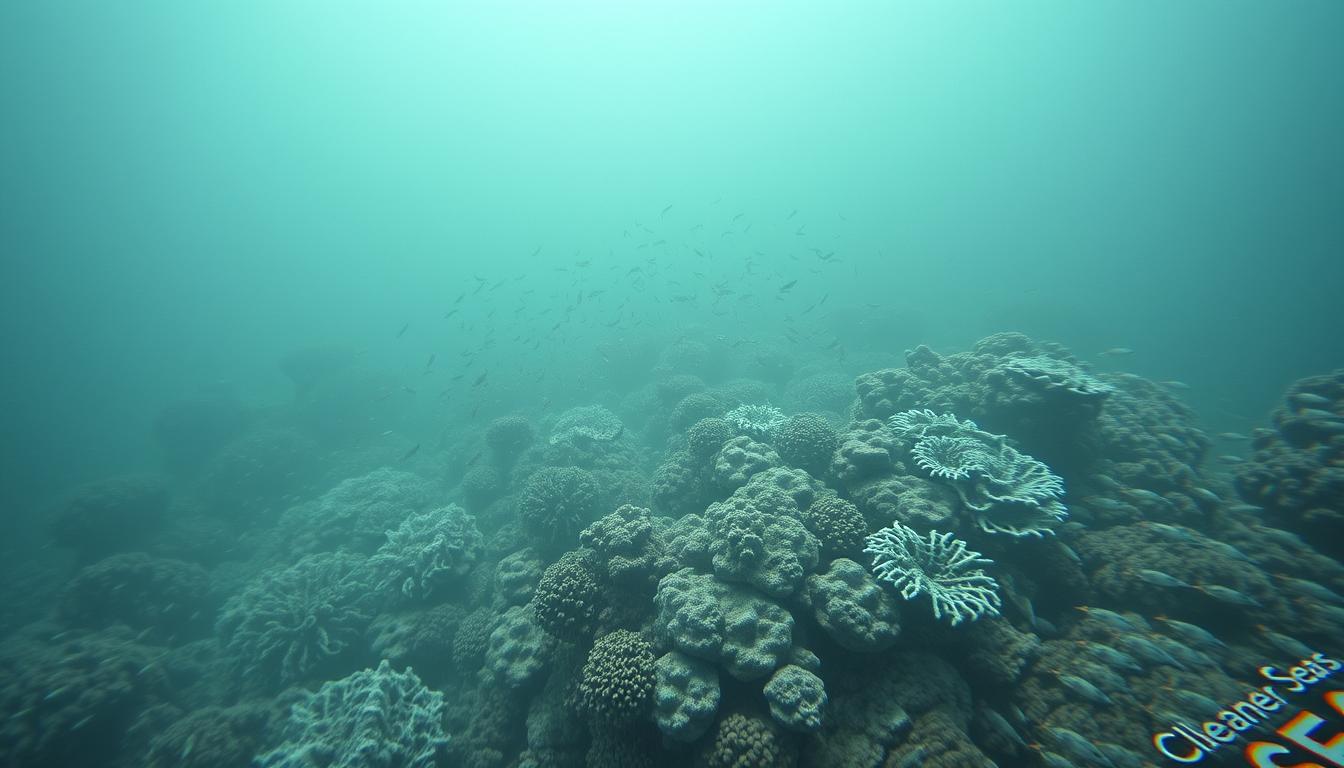
climate change effects on marine ecosystems
- Average sea temperature increases of 0.2-0.6°C per decade
- Shifting distributions of commercial fish stocks
- More frequent extreme weather events damaging coastal habitats
- Changes in plankton communities affecting entire food webs
UK waters have advanced monitoring systems. They track changes in real-time. This helps scientists predict future impacts and protect vulnerable species.
Overfishing
Overfishing is a big problem in UK waters. Despite rules, too much fishing is happening. This is hurting cod, herring, and mackerel stocks.
The idea of Maximum Sustainable Yield (MSY) is often ignored. This means too many fish are being caught. This leads to fewer fish and more fishing, creating a cycle of decline.
Bycatch is another issue. It’s when non-target species get caught. This can harm a lot of marine life, often killing them.
“The North Sea has experienced some of the most intensive fishing pressure in the world, with nearly 70% of commercial stocks fished beyond sustainable limits at various points in recent decades.”
Destructive fishing methods like bottom trawling harm the sea floor. This can take years to fix. It destroys places where fish and other sea creatures live and breed.
Pollution
Marine pollution comes in many forms. Plastic pollution is everywhere, harming marine life in the UK.
Other pollutants include:
- Agricultural runoff containing fertilisers and pesticides
- Industrial chemicals and heavy metals
- Pharmaceutical residues from wastewater
- Oil and fuel from shipping and offshore operations
- Emerging contaminants like flame retardants and PFAS
Noise pollution also harms marine life. It affects how fish and mammals communicate and find food. Activities like shipping and seismic surveys make too much noise.
Light pollution disrupts marine life that relies on darkness. It affects sea turtles and fish, changing their breeding and migration patterns.
Climate change, overfishing, and pollution work together. They weaken marine life, making it harder to recover. This creates a cycle of harm that’s hard to stop.
Conservation Initiatives in the UK
In British waters, conservation efforts are making a big difference for endangered marine species. The UK uses a mix of legal protections, scientific research, and community involvement. This approach is helping vulnerable marine ecosystems and the species that live there.
National Marine Protected Areas
The UK’s marine conservation strategy focuses on Marine Protected Areas (MPAs). These areas are safe for marine life to grow without much human disturbance. The UK has protected over 30% of its waters, beating international targets.
The UK’s MPA network has different types for different goals:
- Marine Conservation Zones (MCZs) – protect nationally important marine wildlife, habitats, and geological features
- Nature Conservation MPAs – designated in Scottish waters to protect marine biodiversity
- Special Areas of Conservation (SACs) – protect habitats and species listed under the EU Habitats Directive
- Special Protection Areas (SPAs) – safeguard important areas for rare and vulnerable seabirds
These areas have strong laws to stop harmful activities like fishing and development. New tech like satellite tracking and drones helps enforce these rules.
Lyme Bay, off Devon and Dorset, shows how MPAs work well. After fishing rules were set in 2008, species diversity went up by 40%. The seabed is now healthier, with more fish and invertebrates.
“Marine Protected Areas are not just paper parks – when properly managed and enforced, they deliver real conservation benefits. The recovery we’ve seen in places like Lyme Bay proves that giving marine ecosystems space to recover works.”
Species Recovery Programmes
The UK also has Species Protection Measures for vulnerable marine animals. These programmes use science, habitat work, and reducing threats to help endangered species.
The grey seal is a big success story in Britain. Once nearly extinct, there are now over 120,000 grey seals thanks to laws and conservation. The UK is home to about 40% of the world’s grey seals.
For endangered species like the flapper skate, recovery plans include fishing limits and research. These efforts help young skates grow in safe areas before they venture out.
Harbour porpoise protection shows how different groups work together. Conservation efforts include:
- Acoustic monitoring to track population movements
- Fishing gear modifications to reduce bycatch
- Designated Special Areas of Conservation in key porpoise habitats
- Noise reduction regulations during sensitive breeding periods
Success in these programmes comes from working together. Government, science, conservation groups, and communities all play a part. This ensures protection is both effective and lasting.
Despite challenges like climate change, the UK’s efforts show that science-based conservation can work. These successes offer lessons for protecting marine life in the UK and around the world.
The Role of Technology in Conservation
Advanced technology is giving us new insights into endangered marine species. As we work harder to protect the ocean, new tools and digital solutions are key. They help us understand and protect marine life in ways we couldn’t before.
The digital revolution is changing conservation. It uses new hardware and software to track and protect marine life. This technology is more precise than ever before.
Tracking Endangered Species
Satellite tagging has changed how we see marine species movements. These small devices can track animals for months or years. In UK waters, they’ve shown us how basking sharks migrate thousands of miles.
Acoustic monitoring networks are another big step forward. They use underwater “listening stations” to track marine animals. The UK’s network helps scientists study everything from salmon to seals.
Environmental DNA (eDNA) sampling is also a game-changer. It lets scientists find species by analyzing water samples. This method can find dozens of species in one sample, helping us monitor marine areas.
Drone technology is now key for coastal surveys. Drones give high-resolution images of coastlines and marine life at a low cost. In the UK, drones help monitor seal beaches and track coastal erosion.
Data Collection and Analysis
The rise in data collection has brought new challenges and chances in marine conservation. Big data helps scientists find patterns that were hard to see before.
Machine learning algorithms are now used to identify animals from photos. This tech can spot unique markings on whales or turtles, tracking them without tags. It’s made marine conservation more efficient.
Citizen science platforms have made data collection more open. In the UK, projects like Seasearch train volunteers to record underwater data. This helps build a detailed picture of marine life around the British coast.
“Technology has transformed marine conservation from an observational science to a predictive one. We can now forecast threats to endangered species and intervene before populations reach critical levels,” explains Dr. Emma Wilkinson, marine biologist at the UK Marine Conservation Society.
The Zooniverse Penguin Watch project shows how tech and public help can work together. It lets people count penguins in Antarctica from home. This project shows how digital tools can engage people worldwide in conservation.
As these technologies improve, they open up new ways to protect the ocean. By combining satellite tracking with citizen science, we get a deeper understanding of marine ecosystems. This gives us hope for the future of marine species.
Community Involvement in Marine Protection
In the UK, people are stepping up to protect the ocean. While scientists and policies are key, local efforts make a big difference. Communities are tackling issues like plastic and habitat loss with science and action.
Grassroots Movements
The UK has many groups making a big impact. Surfers Against Sewage started in Cornwall and now leads the fight against pollution. They clean beaches and get thousands to join in.
The Marine Conservation Society’s Beachwatch is another success. It cleans beaches and tracks pollution, helping to change laws on plastic.
Fishing communities in Scotland are also leading the way. The Berwickshire Marine Reserve shows how fishers and conservationists can work together. These local efforts often succeed where others fail, thanks to local knowledge.
The most successful marine conservation efforts are those that engage local communities as active participants, not just recipients of rules.
Education and Awareness Campaigns
Getting people involved is key to protecting the ocean. The Marine Conservation Society’s Cool Seas teaches kids about the sea. It’s a step towards a future of ocean lovers.
Citizen science projects let everyone help with research. Reef Check and Capturing Our Coast are examples. Even with a smartphone, you can help by recording marine life.
Good Fish Guide helps people choose sustainable seafood. It’s simple and makes a big difference. It encourages buying fish that’s good for the ocean.
Digital platforms and social media have helped spread the word. The #2MinuteBeachClean campaign is a great example. It shows how easy it is to help the environment.
Technology is making it easier for people to help. Apps let you identify species and report pollution. It’s a way for more people to get involved.
These community efforts show that conservation is more than science and rules. When people connect with the ocean and take action, it becomes part of their culture. This approach makes conservation strong and adaptable.
International Efforts and Agreements
Protecting our oceans needs strong international agreements. These agreements share the responsibility of saving endangered marine life. Marine animals don’t see borders, so countries must work together to protect them.
In the last 30 years, more countries have joined forces to save marine life. They use science, policy, and enforcement to tackle ocean challenges.
As we learn more, we see that no country can save the oceans alone. The best way is for many countries to work together towards the same goals.
CITES and Marine Species
The Convention on International Trade in Endangered Species of Wild Fauna and Flora (CITES) is key to protecting marine life. It controls the trade of wildlife products, including those from the sea.
In UK waters, CITES protects many important species. These include:
- Basking sharks, whose fins are highly valued in international markets
- European eels, facing severe population declines due to overfishing
- Several seahorse species, threatened by the traditional medicine trade
- Sturgeon species, prized for their caviar
- Various coral species that support complex marine ecosystems
CITES uses a list system to protect species. This has helped reduce harm to many endangered marine species.
“CITES has been instrumental in reducing international trade pressure on vulnerable marine species. Its success depends on national action and strong enforcement.”
But enforcing these rules is hard. New tech like DNA testing and blockchain helps check if products are legal. This makes it easier to spot protected species in trade.
The Role of the IUCN
The International Union for Conservation of Nature (IUCN) is key to marine protection. Its Red List helps decide which species need most help.
The IUCN’s groups bring experts together to save marine life. They focus on:
- The Shark Specialist Group, which has been key in protecting sharks
- The Marine Turtle Specialist Group, leading global turtle recovery efforts
- The Cetacean Specialist Group, working on whales, dolphins, and porpoises
- The Seahorse, Pipefish and Stickleback Specialist Group, fighting for these unique fish
UK scientists help these global efforts. They provide research and advice. Groups like the Marine Conservation Society and the Zoological Society of London are involved.
But Brexit has changed the UK’s role in marine conservation. The UK keeps its global commitments but has renegotiated its role in regional groups like OSPAR.
Despite successes, there are challenges. Enforcement varies, and political support can change. Agreements also move slowly against fast threats.
The best species protection measures use global policies and local action. With tech and enforcement, they can protect endangered marine species everywhere.
Success Stories in Marine Conservation
Many marine conservation success stories show that recovery is possible. These stories prove that with the right protection and support, even threatened sea life can recover. They offer valuable lessons for future conservation efforts.
Reviving Wildlife Populations
The UK has seen a big win with the grey seal population. Once nearly extinct, there are now over 120,000 grey seals along British coasts. This is about 40% of the global population.
In the North Sea, humpback whales have returned after decades away. They were absent due to whaling. Now, they are spotted off the Scottish coast again. Dr. Emma Thompson says:
“The return of humpback whales to the North Sea isn’t just a conservation win—it’s nature’s vote of confidence in our protection efforts. Their presence indicates improving ecosystem health and biodiversity throughout the region.”
In Marine Protected Areas, some fish species are recovering. For example, cod in the Dogger Bank MPA have increased by 35% with protection. Scallops in Lyme Bay have also quadrupled after banning bottom trawling.
These successes came from careful planning and action. Legal protections, fishing quotas, and habitat improvements helped. Advanced monitoring technologies also played a key role.
Habitat Restoration Projects
Restoring marine habitats is key to conservation success. In Wales, a seagrass meadow restoration project is a great example. Volunteers have planted over two million seeds, creating vital habitats for fish and sequestering carbon.
Native oyster reefs are also being restored. The Essex Native Oyster Restoration Initiative has added over 25,000 oysters to estuaries. Each oyster filters up to 200 litres of water daily, improving water quality and supporting over 170 marine species.
Along the eastern coastline, saltmarsh rehabilitation has transformed areas. These projects protect coastlines, provide habitats for fish and birds, and act as carbon sinks. They help mitigate climate change impacts on threatened sea life.
Dr. James Wilson says:
“When we restore habitats, we create resilient ecosystems that support biodiversity at all levels. A healthy seagrass meadow or oyster reef doesn’t just help one endangered species—it supports entire food webs.”
These successes show that science-based interventions can reverse decline. Long-term commitment, funding, community involvement, and adaptive management are key. These factors help projects succeed.
While challenges are big, these success stories give us hope. They show that with the right approach, our marine ecosystems can recover. This ensures a sustainable future for wildlife and coastal communities.
How to Get Involved in Marine Conservation
The fight to save endangered marine species needs everyone’s help. Your actions can make a big difference. There are many ways to help protect our oceans, whether you have special skills or just love the sea.
Volunteer Opportunities
In the UK, there are many volunteer programs for marine conservation. The Wildlife Trusts in Britain have regular marine monitoring projects. Volunteers help collect data on coastal species and habitats. No experience is needed, and you’ll get all the training you need.
Beach clean-up organisations like Marine Conservation Society and Surfers Against Sewage host clean-up events all year. These clean-ups help remove harmful debris and support research on pollution. In 2022, UK beach clean volunteers picked up over 150,000 pieces of litter.
Citizen science projects are key in tracking changes in habitats and species. Seasearch trains divers to record marine life, while the Shark Trust’s Great Eggcase Hunt helps sharks by identifying egg cases found on beaches.
Marine conservation needs a variety of skills. Skills like diving and data analysis are important. But so are public education and social media skills. There are roles for everyone, from one-day events to long-term jobs.
Supporting Conservation Organisations
Financial support is vital for marine conservation. In the UK, some top organisations include:
- Marine Conservation Society – Works on policy change, beach cleaning, and sustainable seafood
- Blue Marine Foundation – Creates marine reserves and promotes sustainable fishing
- Whale and Dolphin Conservation – Protects cetaceans in UK waters and worldwide
- The Ocean Foundation – Supports research and conservation projects on habitat destruction
When you donate, check how the money is used. Good groups spend on conservation, research, and policy work. They often publish reports showing how your money helps.
Everyday choices can also help. Choose sustainable seafood, use less plastic, and reduce carbon emissions. Even small actions, like using reef-safe sunscreen, make a difference.
“Never doubt that a small group of thoughtful, committed citizens can change the world; it’s the only thing that ever has.”
Local action is also key. Talk to your MP about marine protection, support marine zones, and spread the word in your community. Social media is great for sharing marine conservation news.
Remember, small actions add up. By volunteering, donating, and making eco-friendly choices, we can all help protect our oceans for the future.
Future Challenges and Opportunities
The future of marine conservation is filled with challenges and chances. We’ve made progress, but we need new ideas and dedication from everyone. This journey ahead is critical for our oceans.
Addressing Climate Change Adaptation
Climate change is changing our oceans fast. Sea temperatures and acid levels are pushing species to adapt or disappear. We must create protected areas that can handle these changes.
UK scientists are working on warning systems for coral bleaching. They’re also moving species to safer places. This is all part of making our oceans resilient.
Engaging Policy Makers and Stakeholders
Overfishing is a big problem, even with rules in place. We need policies that protect our oceans and support our economy. The UK can lead the way in marine protection after Brexit.
We can use technology to fight overfishing. DNA tracking and AI monitoring help us protect endangered species. Public involvement through science projects and online platforms is also key.
Our success in saving the ocean depends on adapting and staying committed. We must protect our ocean’s life for the future.

